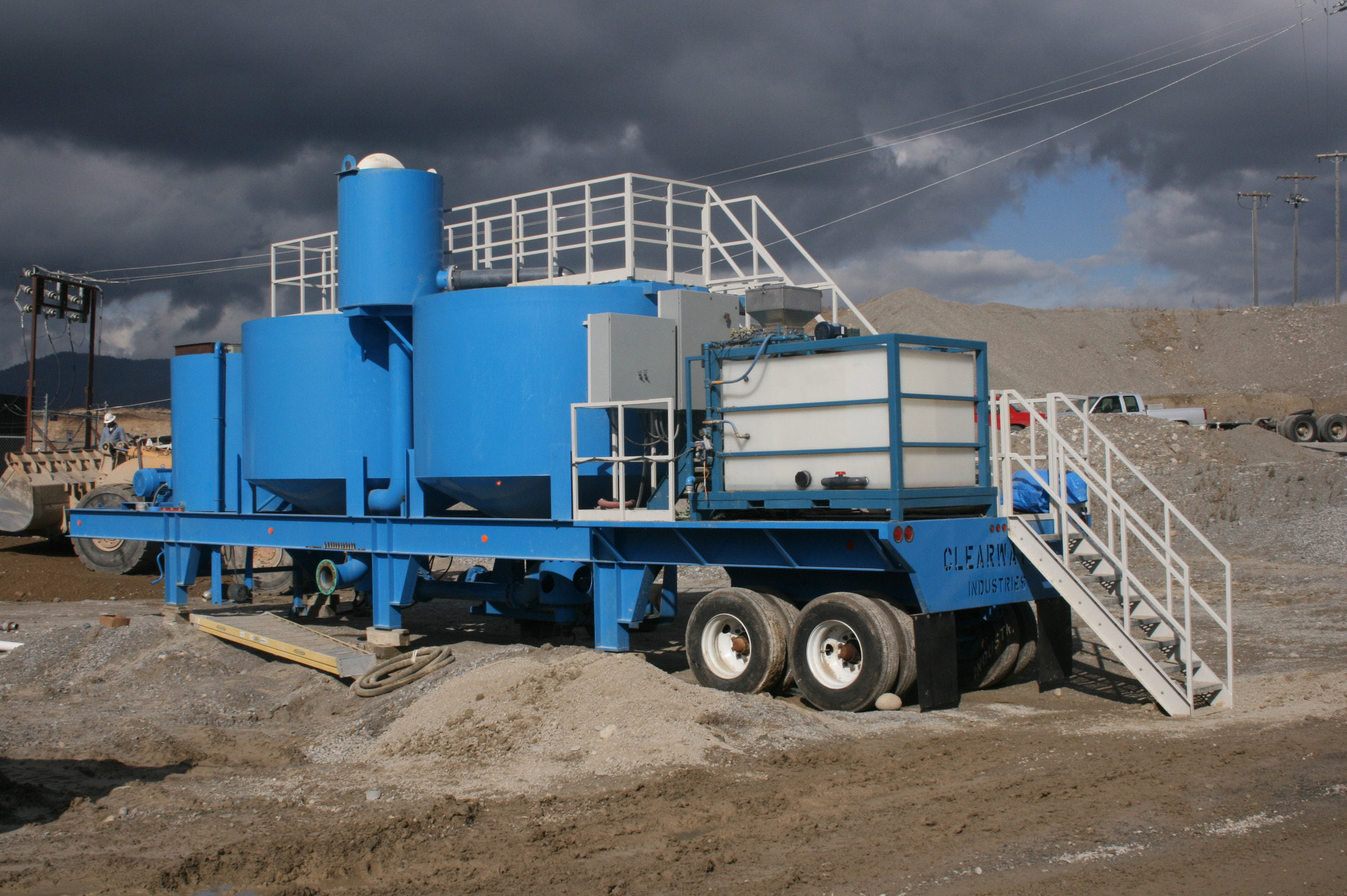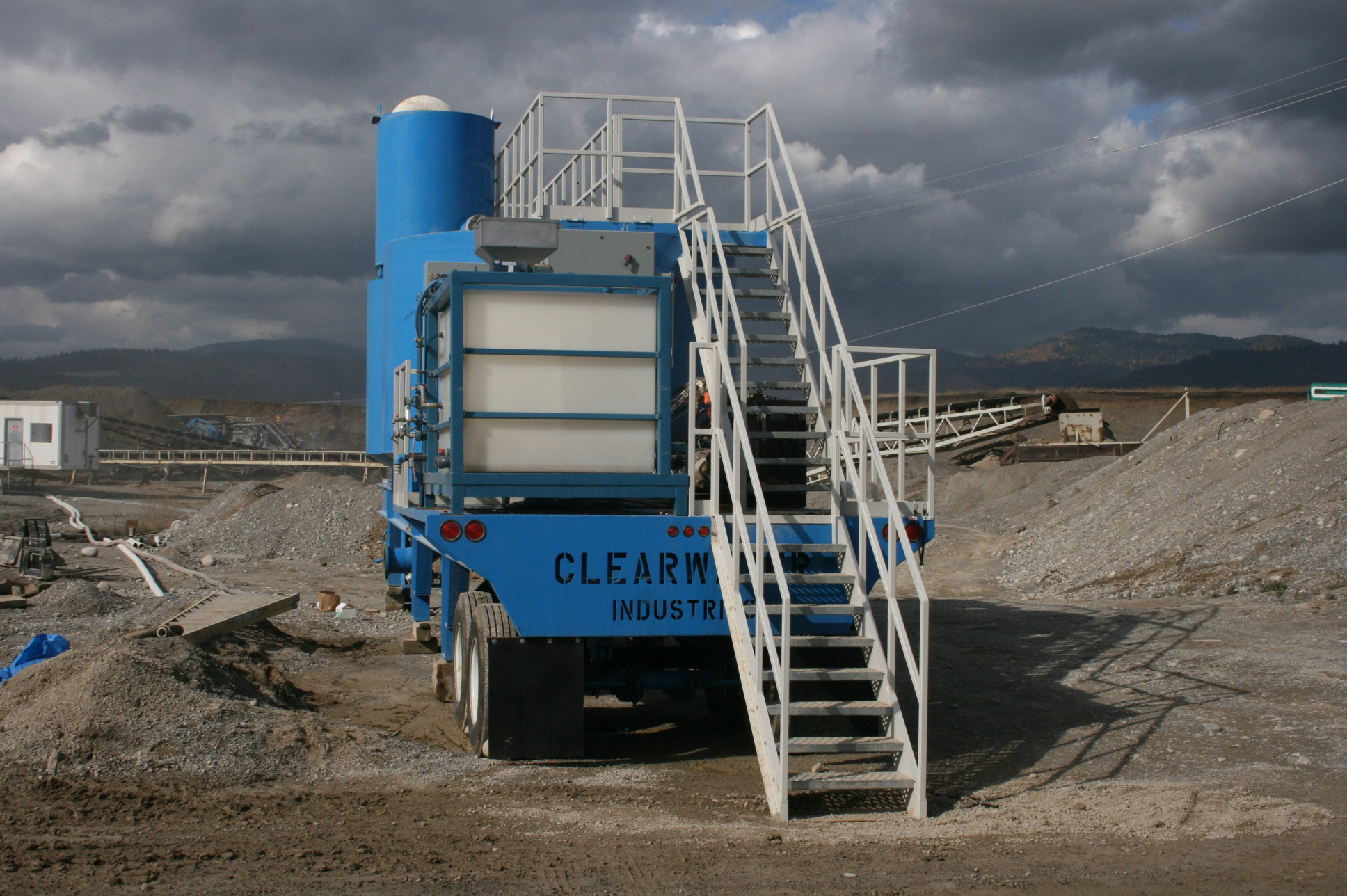A portable wash plant operation is only as efficient as its water resource management – and when water is tight – production may often come to a halt. “If you don’t have the water, you’re not going to get the job done,” says Larry Peak, owner of Sandpoint, Idaho-based Peak Sand & Gravel, Inc., an operation with three portable plants and one stationary location. The company is constantly on the move, working seven local sites, and completing custom crushing and washing projects for customers located within Idaho’s panhandle and across its borders into Montana and Washington.
In past years, its portable washing projects had been limited by water availability at certain sites. “We had to schedule most of our jobs in the spring because we had the highest water table then – but in the end we would always run out of water and by June we would have to stop as we didn’t even have enough recharge water to fill a well back up,” says Peak. “Sometimes we were even taking the water out of the well, putting it in the pond, sucking it out of there, and running it through the plant. Then we would run dirty water through mud tanks, pump the mud out, and put the clean water back in the pond. We were going through nearly 300-gallons-per-minute of steady makeup water alone,” he adds.
Upon the award of a 100,000-ton portable washing project in Haugen, Montana, Peak decided to upgrade his processes with the purchase of a portable, closed-circuit water clarifier manufactured by Clearwater Industries. “The new clarifier allows us to recycle and reuse water, while keeping our makeup water to a minimum. This opens up many new opportunities for us – sites where there is little-to-no water and no place for a settling pond,” says Peak who worked closely with Bob Gralton, president of Clearwater Industries, to create a customized solution.

Gralton explains that traditional closed-loop systems typically require ponds for water discharge and for feed water to the plant. Alternatively, Peak’s unit has a clean water tank placed right on the clarifier. From this tank, the water is pumped directly to the wash plant. Then the clarifier takes the dirty water stream and produces clean water immediately, concentrating the fines or solids to a thick state. The totally self-contained unit includes a dry polymer feed system, hydraulic package, control panels, a mud discharge pump, and a clean water return pump to supply the wash plant. With this very tight closed-circuit operation, at least 90 percent of the water is reclaimed, and importantly, the need for a pond is eliminated.
Overcoming Problematic Ponds & Processing
Long familiar with the downside of pond use, Peak says that doing portable washing the old way has always involved trucking in large volumes of water. “You fill the ponds and then they evaporate or leak into the ground. We’ve even had ponds that we’ve shotcreted or paved – and they’ve still leaked. With the new clarifier, we bypass the clean water pond altogether,” he says.
Peak also stresses that previously his wash plant operation was outfitted with fabricated “mud tanks” taken from a hot mix plant. They had drag chains in them that would periodically scrape up mud that would settle on the bottom of the tanks. “The mud tanks worked but they consumed too much water, much of which would all go out with the mud. And, our situation is how much water do we have available to us, and how much room do we have to store the mud? With the new equipment, we can thicken the solids easily, while circulating and recycling the water efficiently,” he says.

As to material flow, most often Peak operates with a portable jaw in the primary position, followed by two 8’ x 20’ screen and cone crusher combinations in the secondary and tertiary circuits. The 1-inch-minus material is fed to a 6’ x 20’ wash plant followed by twin-44-inch screws.
Fresh water is pumped to the wash plant from a 15,000-gallon supply tank parked next to the clarifier. After the material is processed, the dirty water is discharged into a sump that sits remotely from the clarifier. From there, the discharge water is pumped into a flock tank atop the clarifier where the polymers are added. Next, the flow separates into twin clarifying tanks or flocculation chambers where the suspended solids settle out of the wastewater. Then the clear water overflows back into a clean water tank, which is mounted on the clarifier. This tank has a “keep-full” system on it. If its float drops, water is automatically added from the makeup tank to keep the system in balance. The thick mud is pumped from the bottom of the clarifiers, usually into an excavated area for drying. “The big thing is that the unit produces a good drier mud and that saves big on water,” says Peak.
All the water and mud pumps on the clarifier are variable speed in operation. “That is an option I requested that allows us to ‘dial in’ our parameters. In a closed-circuit operation, you have fluctuations in atmospheric pressure, water temperatures, sump levels and more – so the variable speed feature allows up to optimize our water usage,” says Peak.
The Clearwater Model 2000 portable water clarifier, as its name indicates, delivers up to a 2,000 gallon-per-minute capacity, at 20-percent solids by volume. The system is complete with an automated flocculant system, a 40 HP drive, and a hydraulically-driven mud pump that will move mud up to 800 feet. The unit typically requires no more than three hours for setup with features such as fold-up catwalk handrails that streamline the process.

Settling On The Right Solutions
Interesting to note is that Peak’s decision to choose a clarifier manufactured by Clearwater Industries was highly motivated by solutions that Gralton provided some ten years prior. “I was using a clarifying system from another manufacturer at my stationary plant and it wasn’t working right. Among other things, they had given me the wrong polymers. Then Bob Gralton showed up and got everything working for me. I ended up buying one of his automated flocculant systems for my stationary operation, and then recently decided to go with his clarifier for my portable plants,” says Peak.
Gralton stresses that flocculants come in different molecular weights and charges. “It’s imperative to find a vendor with the products and resources to select the right flocculant to settle the solids out of the water immediately,” he says.
Peak would agree. “I’ll bet our makeup water is running at no more than 90-gallons per minute – maybe even less. As of September 2007, we’ve been running two shifts and it’s the driest year we’ve had. Being able to recycle our water is really a huge deal,” he says.
As Seen in Portable Plants & Equipment Magazine
Written By: Carol Wasson
Carol Wasson is a Fort Wayne, Ind. – based freelancer




